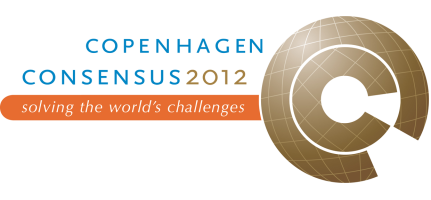Third Copenhagen Consensus: Emission Abatement Assessment, Tol
Assessment Paper
Richard S. J. Tol's paper on Emission Abatement was of one of the key research papers from the Copenhagen Consensus on Climate in 2009 (Fix The Climate), this updated Assessment Paper was released for the third Copenhagen Consensus. The working paper used by the Expert Panel is available for download here, the finalized paper has been published in Global Problems, Smart Solutions - Costs and Benefits by Cambridge University Press.
Short summary
Richard Tol makes the case that there is wide agreement in the economic literature that greenhouse gas emission reduction is best done through a carbon tax. Climate policy, he notes, is not about spending money. It is about raising money (and, of course, about finding the best way to spend the revenues raised through a carbon tax.)
He makes the case that research and development and CO2 abatement are complements, not substitutes. He points out that drastic reduction of carbon dioxide emissions would be very expensive with current technologies, so R&D is a critical part of CO2 abatement policy. However, most of that R&D is innovation and diffusion, rather than invention. For innovation and diffusion, the regulator should create a credible promise of a future market: In this case, the promise of an emission reduction target or, better, a carbon tax in the future.
The best way to give a credible signal is to start now – which has an additional advantage because the regulator does not know how close to market renewable energy technologies really are.
Tol argues that the costs of deep emission cuts are relatively small if emission reduction targets are lenient at first but accelerate over time; all emitting sectors are regulated and marginal abatement costs are the same; all gases are regulated and priced uniformly; all countries reduce emissions, and marginal costs are equal; and climate policy is coordinated with other policies. The costs of emission reduction rapidly escalate if such rules are are violated – which unfortunately, they often have been in the past.
Recent progress has been made in alternative energy technologies, notably in bioenergy and solar power. On the other hand, nuclear power has fallen out of favour. It is also increasingly clear that governments have great difficulty in delivering emission reduction programmes that are least-cost.
While very stringent emission reduction targets such as the long-term goals of the European Union do not pass the benefit-cost test with any assumptions. However, very modest emission reduction appears to be justifiable with any number of assumptions. More stringent emission reduction needs more favorable assumptions.
Tol finds that a low tax of about $1.80 on each tonne of carbon would generate benefits worth between $1.5 and $52. However, a much higher tax set at $250 would cost more than it would gain, with only benefits of 2-67 cents.
Watch Richard Tol's phone presentation of his research at YouTube

